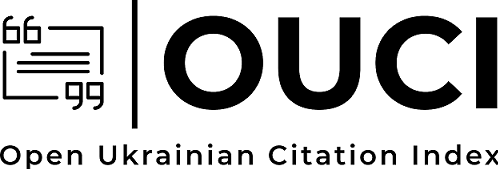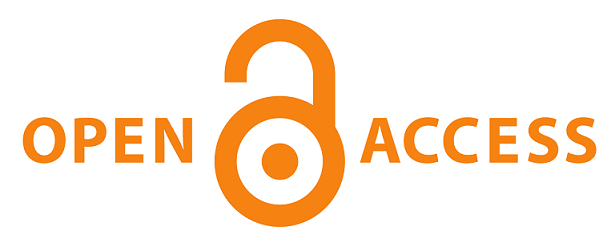Article Requirements
Work Structure
At the top, on the left side, the author's first and last name in English (pin 14, bold), personal information (degree, academic title, position, place of work, city, country, e-mail address, contact phone) and ORCID (Open Researcher and Contributor ID) as a hyperlink (pin 14). To obtain ORCID, you must register on the website: https://orcid.org/. ORCID must be filled in (author and publication information).
The title of the article (up to 10-12 words, 16 pt, bold) in English is given with paragraph break, centered, not from the paragraph indent.
Further, with the paragraph indent in English, the extended annotation (1800–2000 printed characters with interspaces, 12 pt, interline spacing - 1) and keywords (5-7 words, 12 pt).
The annotation should contain the following information: significance of the chosen topic, the subject and methods of research and the emphasis on their components, the features of scientific research, and credibility of the obtained results.
After the baseline information, primary presentation of information is given. According to the requirements, the article must comply with the following structure: 1) statement of a question in general and its connection with scientific or practical cases; 2) analysis of recent research and publications; 3) goals and objectives statement; 4) presentation of the main material; 5) conclusions and prospects for further exploration.
At the end of the article, there is a list of literature references (Ukrainian style State standards of Ukraine (DSTU) 2015 and APA-style): «List of bibliographic references» and «References» (12 pt, interline spacing – 1, text alignment – width).
Article Submission Guidelines
Materials are submitted in Ukrainian or English, proofread and edited.
Specifications:
- The maximum length of the article – 0,5 to 1 printed page (20 000 to 40 000 printed characters with interspaces) including footnotes, literature references and appendixes;
- document format – text processing program Microsoft Word;
- font – Times New Roman;
- font size – 14;
- indention – 1,25;
- interline spacing – 1,5;
- text alignment of the article – Justify;
- all margins – 2 cm.
Highlighting words in italics or bold, changing, decreasing or increasing the font size is not allowed. It is necessary to distinguish between the hyphen «-» and the dash «–» in the text. Between months, years, centuries, you have to put a dash «–», e.g.: 1648–1654, XIX–XX centuries, at the end of the XVIII – the first half of the XIX century. Underscores and extra spaces are not allowed.
Tables and other graphic images are accompanied by corresponding captions according to the following principle:
- the names of the tables, diagrams, figures are placed above the presented data (Table 1. Dynamics...; Diagram 1. Development...; Diagram 1. Structure...);
- the names of illustrations and photographs are given below the image (Fig. 1. Portrait ...);
- technical parameters: 12 pt, bold, italic, center alignment.
Photos and other visual elements (black and white, with grayscale) are placed both in the text of the article and sent as separate files in one of the common formats (JPG or PNG). The use of generally accepted abbreviations is allowed.
In the title of the article, personal names are given according to the following principle: first and last name (without patronymic name). Initials near last names (V. Lavrenov), abbreviations such as «etc.», XX c., the names of residential areas, for example, Chernivtsi, are printed with a nonbreaking space (pressing the keys Ctrl + Shift + Space simultaneously). Abbreviations like 80-s, 2-nd are printed with a nonbreaking hyphen (pressing the keys Ctrl + Shift + Hyphen keys simultaneously). The pages of the article are not numbered.
In-Text References
References to the used literature are given directly in the text of the article, in the form of in-text reference in parentheses. In this case, the last name or the article heading is given in the source language:
- one author: last name, year, pages (Lohr, 2004, p. 91);
- several authors: last name of the first author et al., year, pages (Goshko et al., 2020, pp. 81–82);
- without author: first 3–4 words of the article heading, year, pages (History of the formation of the Ukrainian nation.., 2021, p. 334);
- in historiography, when listing certain researchers, only the year of publication is indicated next to the last name of a particular author, for example: V. Shcherbak (2020);
- when the article includes several works of the author, which were published in the same year, the citation in the reference indicates: last name, year, the first 2-3 words of the article heading, ellipsis, number of pages (Scherbak, 2000, Ukrainian Cossacks… , pp. 25).
References to sources (archive materials, regulations, periodical publications, materials from collections of sources, etc.) are provided in a form of a footnote using the function “Links – insert footnote”. Sources in footnotes are laid out in accordance with the requirements of DSTU 8302:2015. For example:
- The Central State Historical Archives of Ukraine in Kyiv (TsDIAK of Ukraine). Fund 285. Description 1. Case 546. Paper 108.
- TsDIAK of Ukraine. Fund 278. Description 2. Case 6. Papers 44-46 spread.
Footnote specifications:
- font size – 10;
- interline spacing – 1;
- text alignment – Justify.
Reference list
“Kyiv Historical Studies” scientific journal has a practice of using two literature formatting styles: Ukrainian style according to DSTU 8302:2015, and the international style of the American Psychological Association (APA).
In this regard, at the end of each article two lists are given:
- «List of bibliographic references» – is executed in accordance with DSTU 8302:2015 style requirements and submitted in the source language;
- «References» – is executed in accordance with APA style requirements and submitted in Roman letters. Publications that are not written in the Roman alphabet (Cyrillic, Chinese, Japanese, Korean, Arabic, Farsi, Hebrew, Hindi, etc.) should be transliterated and the English translation of the title should be indicated next to it in square brackets.
For transliteration of authors' last names, book titles (journals, collections, etc.), online converters should be used separately for Ukrainian and Russian languages. We recommend the following resources:
- for the Ukrainian language: http://ukrlit.org/transliteratsiia
- for the Russian language: https://tonyline.com.ua/tools/translit/
Both “Literatura” and “References” are given without numeration, in alphabetical arrangement.
When executing “List of bibliographic references” and “References”, if available, it is necessary to set the Digital Object Identifier (DOI) or the URL of the official website where the publication is posted.
Please note, that sources (archive materials, regulations, periodical publications, materials from collections of sources, except for the source data of the collections) are not included in the “List of bibliographic references” and “References”.
Literature formatting examples: download the document
Submission of materials
Materials for the journal should be uploaded to the system after creating your own account on the website or sent to the e-mail of the responsible secretary m.budzar@kubg.edu.ua
From the Editorial Board
The journal publishes materials of authors with and without an academic degree in the ratio of 60/40. Publication of materials of authors without a degree is carried out on a competitive basis. In case the materials are equivalent, the material that was submitted earlier is accepted for publication. Those who do not have an academic degree need to add a recommendation (review) of the supervisor.
In order to improve the scientific image of the journal, the editorial staff welcomes the use in articles of the latest publications that have a DOI identifier and are indexed in the Scopus and Web of Science bibliographic databases.
Texts that do not meet the above requirements will be rejected. The decision on publication is made by the editorial board. The materials published in the journal reflect the views of the authors, which may not always coincide with the position of the editorial board. The authors are fully responsible for the reliability of the information, the main content of the article and the conclusions.













